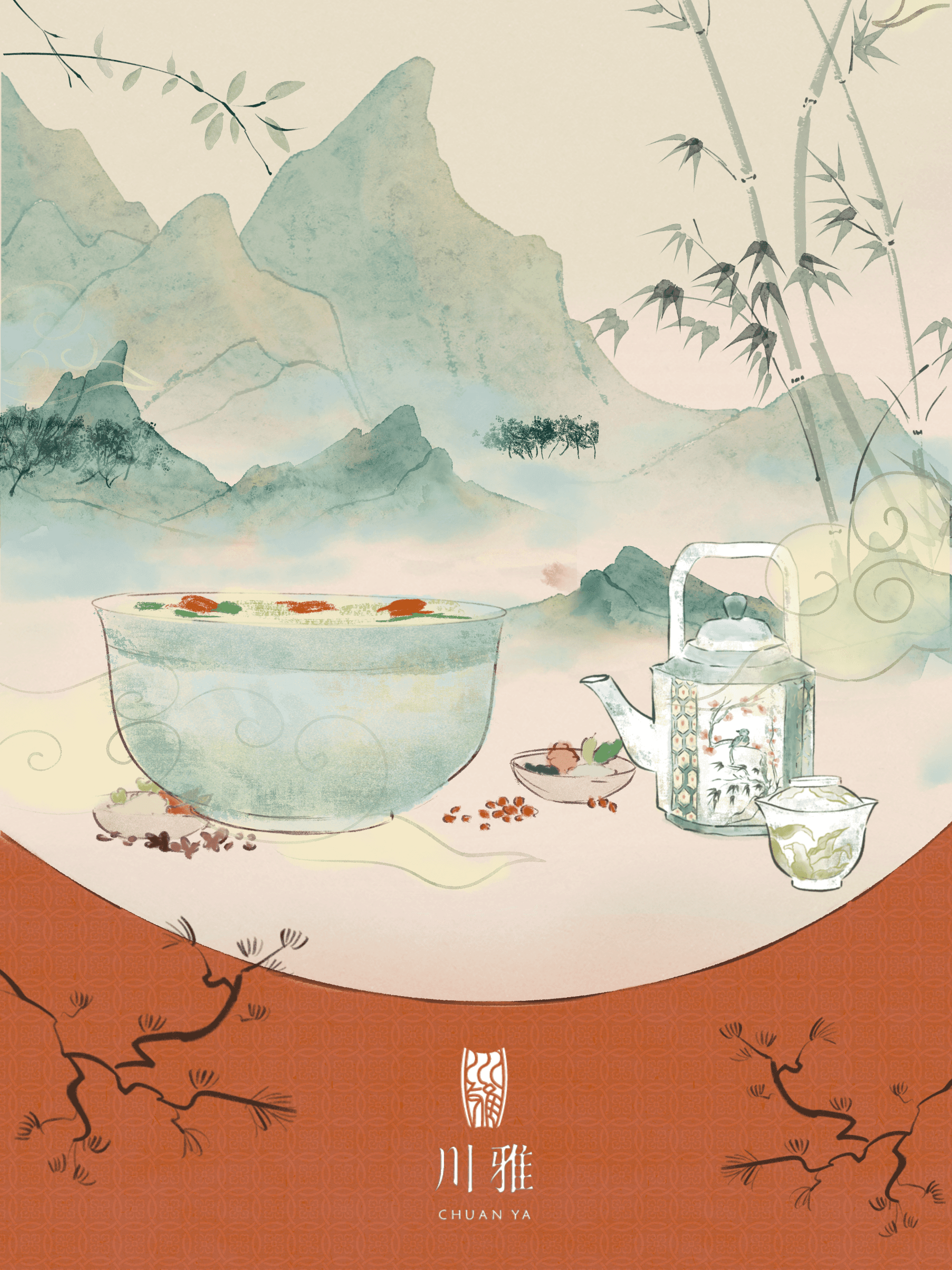History
Back
Sichuan cuisine is renowned for its complex and bold flavors, and it is divided into three principal regional styles:
Upper River Gang (Western Sichuan):
This style is exemplified by the cuisine of Chengdu, the capital city, and the Jiazhou cuisine of Leshan. Chengdu's cuisine, often called the official cuisine, reflects the city's historical significance as a political and cultural hub. It is known for its refined and classic dishes, deeply rooted in tradition.
Small River Gang (Southern Sichuan):
This flavor profile is characterized by the Salt Gang cuisine of Zigong and the cuisines of Luzhou and Neijiang. It represents a different regional approach to Sichuan cuisine, emphasizing distinct local ingredients and preparation methods.
Lower River Gang (Eastern Sichuan):
Represented by Chongqing's Jianghu cuisine, this style is renowned for its intense and vibrant flavors, often highlighting spicy and numbing characteristics.
Historical Evolution and Influences
Chengdu, historically known as Rongcheng, has long been the epicenter of Sichuan's culinary arts. The city's status as a political, economic, and cultural center has significantly influenced its cuisine, making it a symbol of refinement and traditional excellence in Sichuanese food.
A pivotal figure in Sichuan cuisine is Song Yun Ze, whose work traces back to the legendary Rong Le Yuan Sichuan restaurant. This establishment evolved from Zheng Xing Yuan, founded in 1861 by Guan Zheng Xing, an imperial chef. Guan Zheng Xing's innovation involved integrating the private dishes of the Qing Government, creating a banquet style that catered to the wealthy and influential. His apprentice, Lan Guang Jian, further advanced this cuisine by blending regional flavors, thereby defining the distinctive characteristics of Sichuan cuisine: "Each dish has its own style; a hundred dishes have a hundred different flavors." This approach highlights Sichuan cuisine's fresh, clean taste and its famous spicy and numbing qualities.
From 1912 to the 1980s, Rong Le Yuan was Sichuan's top banquet restaurant, known for its rich flavors, elaborate soups, and high-quality utensils. Lan Guang Jian's work established the structure and style of Sichuan cuisine, which was recognized as one of China's four major cuisines. His refinement of the Manchu-Han Imperial Banquet tailored it to Sichuan tastes, setting standards for Sichuan banquets that lasted until the early 1980s. Zhang Song Yun and Kong Dao Sheng, prominent disciples of Lan Guang Jian, later worked to revive the high-end Sichuan banquets of the Republican era, preserving and evolving the culinary traditions.
Contemporary Interpretation
Sichuan cuisine, traditionally known for its bold, spicy flavors, has evolved to include a broader range of dishes. Chuan Ya's official banquet cuisine, influenced by Song Yun Ze's approach, challenges the stereotype that Sichuan food is exclusively spicy. It features a diverse menu style, allowing for a variety of ingredients and flavors, which results in more refined and balanced dishes.
Chuan Ya highlights the essence of Sichuan cuisine with its meticulous cooking techniques and elegant presentation. The reinterpretation of traditional dishes with modern plating and sophisticated preparation offers diners a fresh experience, showcasing the philosophy that "each dish has its own style; a hundred dishes have a hundred different flavors." This approach allows guests to enjoy a sophisticated progression of flavors, reflecting the true depth and variety of Sichuan cuisine.
